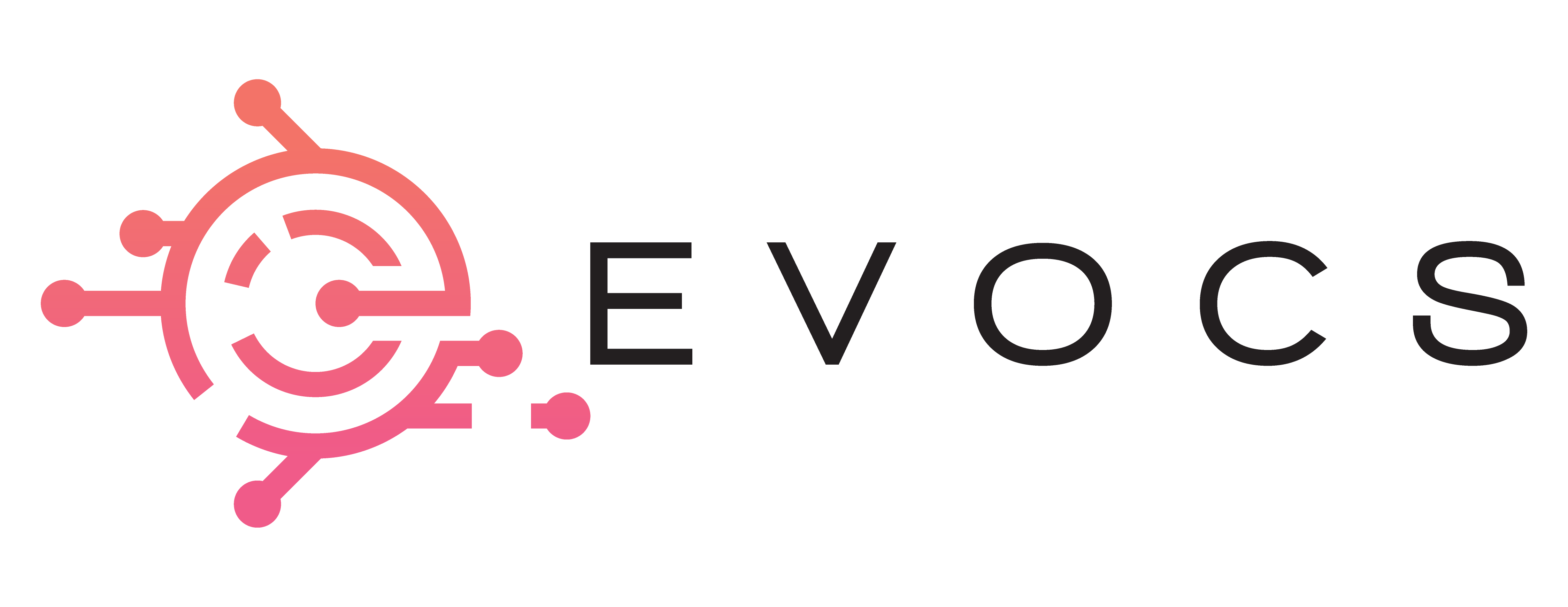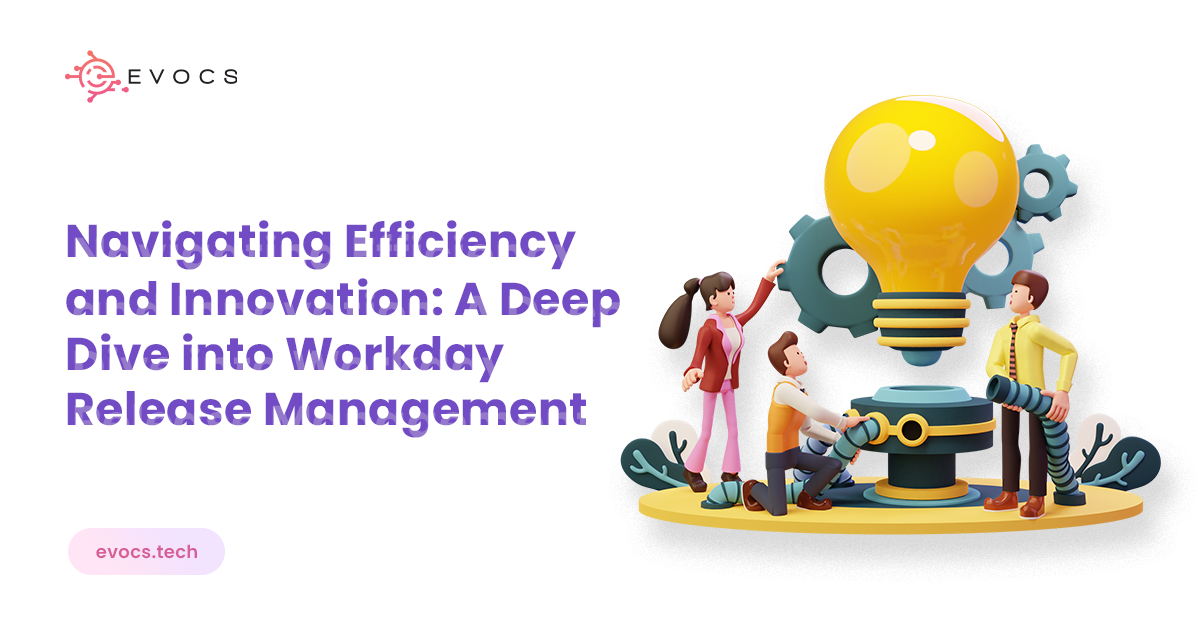
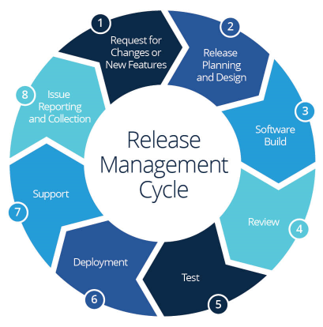
In the modern era of digital transformation, enterprise software systems have become the backbone of operations for organizations worldwide. Among these systems, Workday stands as a leading provider of cloud-based human capital management and financial management software. Workday Release Management plays a pivotal role in ensuring that the software stays up-to-date, efficient, and aligned with an organization’s evolving needs. In this blog, we’ll take a closer look at what Workday Release Management entails, its significance, and best practices for successful implementation.
Understanding Workday Release Management
Workday Release Management is a structured process that facilitates the smooth deployment of updates, enhancements, and new features to the Workday platform. This process involves planning, testing, and deploying changes to ensure that they don’t disrupt critical business processes or compromise system stability. Whether it’s bug fixes, security patches, or major feature additions, Workday Release Management ensures that changes are implemented seamlessly.
What to expect in the Workday Feature Release?
A standard feature Release will encompass novel features or functionalities, certain of which will be deployed automatically. Others, however, will necessitate strategic implementation and rigorous testing to ensure seamless integration for customers. Moreover, Feature Releases might bring about refinements to current functionalities. This encompasses potential enhancements to the user interface, introduction of fresh web services, modifications to existing web services in line with the web service versioning timetable, resolution of bugs, updates relating to payroll tax and adherence to regulations, and occasionally, the introduction of entirely new products.
Broadly speaking, all features will fall into one of the following three categories:
1. Mandatory: These features are automatically integrated by Workday on the feature release date, and customers are required to commence immediate usage.
2. Opt-In: These features are automatically integrated by Workday on the feature release date, and customers have the option to start using them at their convenience with minimal effort.
3. Setup Required: Workday automatically deploys these features on the feature release date, but it’s up to customers to decide whether they want to make use of them. Depending on the complexity of the functionality, a substantial setup endeavor might be necessary. Certain features under this category might also entail updating your professional services agreement with Workday.
In typical circumstances, Workday will always provide a minimum of two releases’ notice before removing or phasing out functionality. This ensures that customers have time to address any potential issues. Consequently, certain features that initially fall under the “opt-in” or “setup required” categories could transition into the “mandatory” category in subsequent releases, unless there are extraordinary circumstances.
The What’s New in Workday report is a compilation of release notes that provides detailed information on features and enhancements in your Workday tenants. You can use the report to plan for your adoption of new Workday functionality. To access the What’s New in Workday report you must have access to Workday What’s New domain in the System functional area.
For example to explore 2023 R2 features : Select a Workday Releases value of Workday 2023 Release 2. This will show you all items scheduled to deliver to your Production tenant in Workday 2023R2 that will be in Preview as of August 5, with new items added each week as we deliver more functionality.
Preview Tenants
The Sandbox Preview tenant is a copy of the Production tenant, but it also contains new functionality available in a future Feature Release. Generally, Workday targets Preview features for the next feature release, but that isn’t guaranteed. Workday sometimes targets Preview features for an unspecified future feature release. Preview features could undergo changes based on feedback or new desired behavior, or retracted and never released as a Preview feature.
The creation of your Sandbox Preview tenant coincides with the timing of your initial Workday Service go-live date and it stays in existence forever. You can use a Sandbox Preview tenant to test new functionality as it becomes available in between feature releases.
Once you have the list of all features, here is a typical flow diagram on how to plan a release:
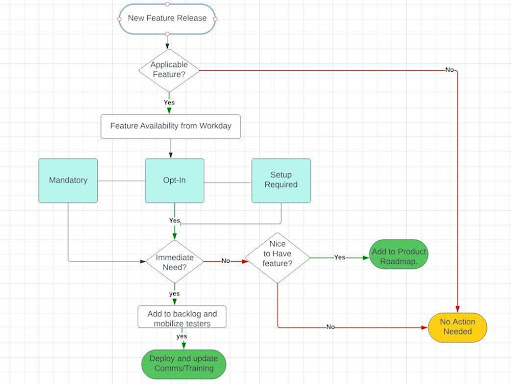
You can find all the information for the Workday Feature Release in the community. Navigate to the Release Center page as shown below and you will be able to find everything that is related to the upcoming release from Workday. This sometimes also includes video content for each feature explaining the change, the impact, and the configuration required.
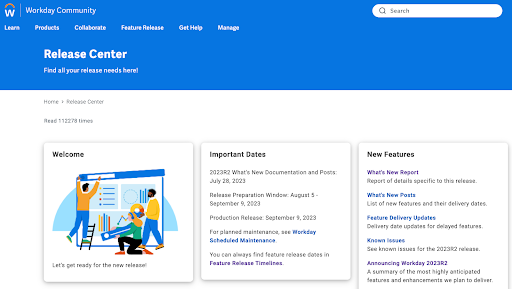
Example : Workday 2023R2 makes it easier to generate documents as part of compensation processes. You can now include the Generate Document step in compensation business processes.
The release notes indicate everything related to the feature and a video to explain the configuration.
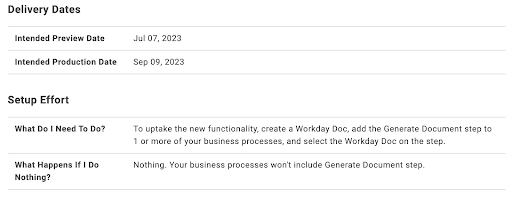
Now, you can follow the flow chart above and decide if and when this will need to be implemented for your organization.
The Significance of Workday Release Management
1. Risk Mitigation: Effective Release Management minimizes the risk of system failures, data corruption, and security vulnerabilities that can arise from poorly managed changes.
2. User Experience: A well-managed release process maintains a positive user experience by avoiding disruptions to daily operations. Employees can continue using the platform with minimal interruption.
3. Innovation Enablement: Workday regularly releases new features and updates to enhance functionality and address user needs. Effective Release Management ensures that organizations can leverage these innovations promptly.
4. Regulatory Compliance: In industries with strict compliance requirements, such as finance and healthcare, Workday Release Management helps ensure that system changes adhere to regulatory standards.
Best Practices for Successful Workday Release Management
1. Thorough Planning: Establish a detailed plan that outlines the scope of changes, testing requirements, and potential impacts on business processes. Involve key stakeholders to gather insights and align with organizational goals.
2. Testing and Quality Assurance: Rigorous testing is crucial to identify and rectify issues before deployment. This includes functional testing, performance testing, and user acceptance testing (UAT).
3. Communication Strategy: Keep stakeholders informed about upcoming releases, their impact, and the expected benefits. Clear communication helps manage expectations and minimizes surprises.
4. Change Control: Implement a robust change control process to track, manage, and approve proposed changes. This ensures that only validated changes are deployed to the production environment.
5. Rollback Plan: Prepare a contingency plan for reverting to the previous version in case of unexpected issues post-deployment.
6. User Training: For significant updates or new features, provide user training to ensure that employees can make the most of the changes and optimize their workflows.
7. Collaboration: Foster collaboration between IT, HR, Finance, and other relevant departments to ensure that the release process aligns with the broader organizational objectives.
8. Post-Release Monitoring: Monitor the platform after deployment to quickly identify and address any issues that may arise. Regular monitoring enhances system stability and user satisfaction.
Why is Release management Crucial?
In a world where technology evolves at an unprecedented pace, effective Workday release management is the linchpin that keeps HR and finance operations in harmony with the platform’s advancements. By minimizing disruptions, keeping up with compliance, embracing innovation, enhancing security, improving user experience, and planning for the future, release management ensures that organizations are poised for success. It’s not just about updating software—it’s about fostering a culture of adaptability, efficiency, and continuous improvement. With strategic release management, organizations can navigate the dynamic landscape of HR and finance management with confidence and agility.
